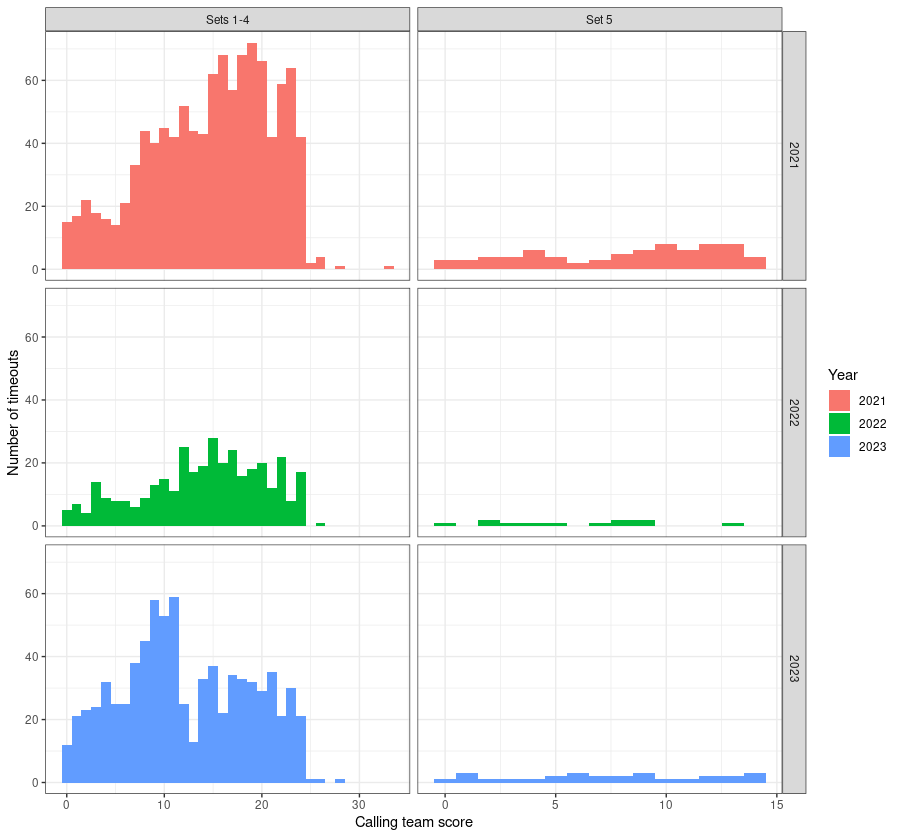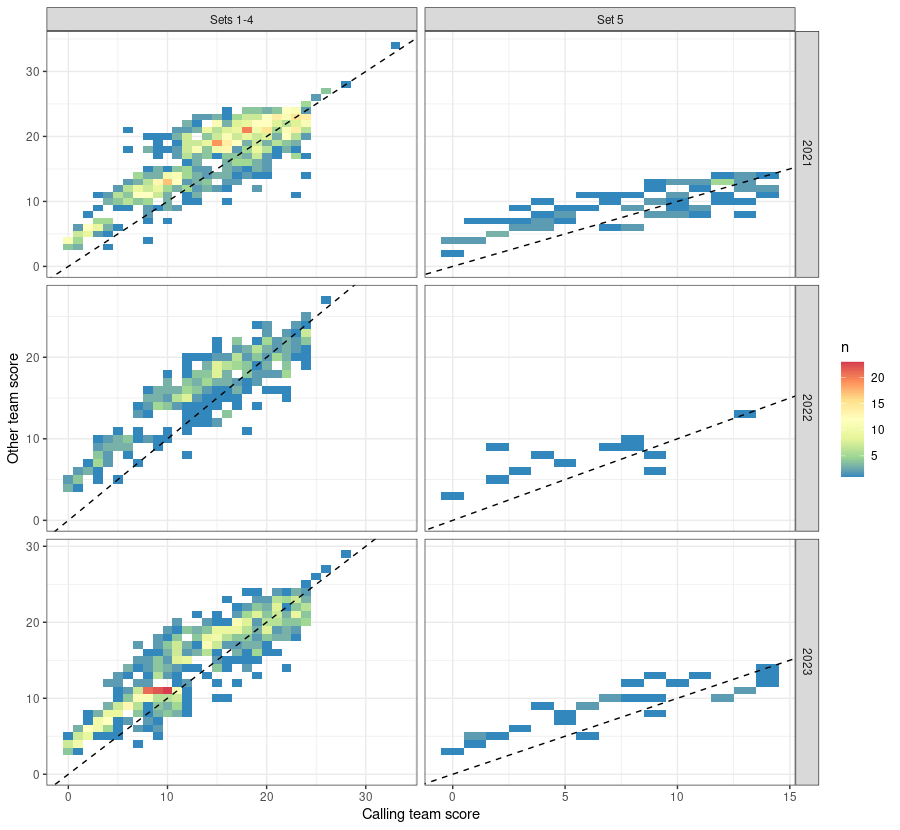As you already know, I am a curious soul and I am always keen to test empirically the passed on wisdom of the ages. Let’s call it conventional wisdom. There is no more solid piece of conventional wisdom than the effectiveness of timeouts. Along with my esteemed colleagues at Science Untangled I have tested this wisdom on several (ok, many) occasions. Some of the specific studies we’ve done are here. More general thoughts on the topic are here.
To learn more about teaching Middle Blockers good reading habits, click here.
The last three seasons of Volleyball Nations League (VNL) have used three different timeout formats. I thought it might be fun, (ok, interesting) (ok, that’s probably a stretch too, but you’ve read this far…) to research. This is what came up.
The three systems used were
2021 – two timeouts per team per set, ie the traditional
2022 – one timeout per team per set
2023 – one timeout per team per set before either team scored their 12th point, and one timeout after the 12th point. That is a one or two timeout per set rule on a ‘use it or lose it’ basis.
Special offer on webinars here.
Not surprisingly there was a clear difference in the number of timeouts per set based on the system. It is clearly Volleyball World’s goal to reduce the number of breaks in play, especially because of the time taken for the Video Challenge System. The number of timeouts taken was:
2021 – 2.54 total timeouts per set
2022 – 1.05 total timeouts per set
2023 – 2.13 total timeouts per set
If the goal was to reduce breaks in play, the ‘use it or lose it’ system was not nearly as successful as the one timeout per set system. Why could that have been? Perhaps if we look at the distribution of timeouts taken we will learn something.

The scale is the same for each season, so we can see some very clear differences. Two timeouts leads to more timeouts after about 16 points. It is logical, perhaps, that at the end of the sets timeouts are more valuable. One timeout has a similar profile, perhaps some more taken at the start of the match. ‘Use it or lose it’ presents a completely different profile. The most timeouts, by far, are taken at the 9th, 10th and 11th points. This representation is even more stark. Look for the hot spot.

This representation also seems to show that the leading team, ie under the line, takes more timeouts than under the two timeout system. And especially takes more timeouts before the 11th point. Which begs the question why?
To see view inside my gym and get an insight into my practice philosophy, click here.
If coaches had always thought that the most important points were the points between eight and eleven, they would always have taken timeouts during that period and the timeout profiles would be similar for 2021 and 2023. That is not what the data shows. Something else must have happened to make coaches take timeouts at that point of the set. The game itself has not changed, the only thing to have changed is the rules. One explanation is that coaches took timeouts solely because they would otherwise lose them. Indeed I witnessed one coach take a timeout leading 11-9, after a sideout, breaking all of the normal ‘rules’ of taking timeouts. I must admit I find this quite weird. Timeouts are conventionally effective because they break an opponent’s momentum (a kettle of fish I have never dipped my feet into). Taking a timeout in the above circumstance seems to be somewhat self defeating, if you assume that timeouts work in that way.
It is all very interesting.
Read about the great Vyacheslav Platonov coaching book here.
